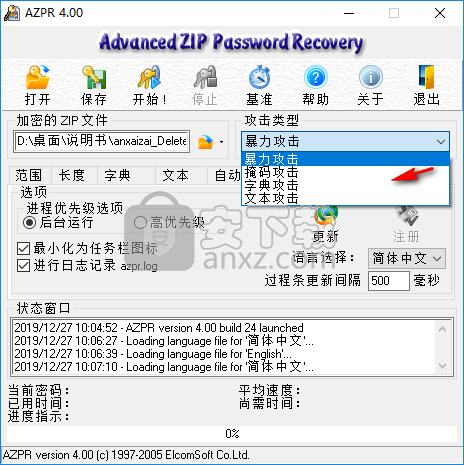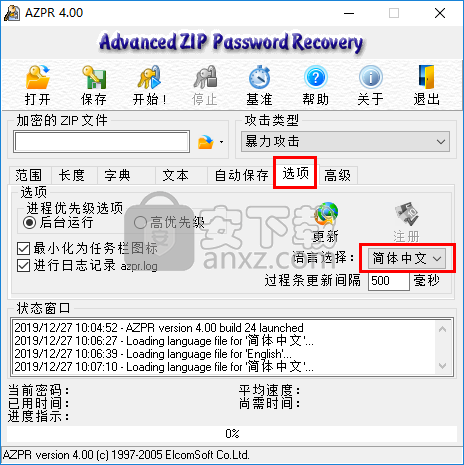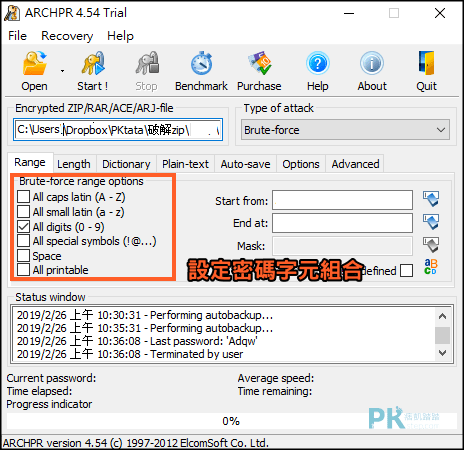


For example, in our example we are using March which has 31 days or 744 hours. Please calculate hours based on the actual number of days in a given month. We measure your storage usage in “TimedStorage-ByteHrs,” which are added up at the end of the month to generate your monthly charges.Īssume you store 100GB (107,374,182,400 bytes) of data in Amazon S3 Standard in your bucket for 15 days in March, and 100TB (109,951,162,777,600 bytes) of data in Amazon S3 Standard for the final 16 days in March.Īt the end of March, you would have the following usage in Byte-Hours: Total Byte-Hour usage = + = 42,259,901,212,262,400 Byte-Hours. This includes all object data and metadata stored in buckets that you created under your AWS account. The volume of storage billed in a month is based on the average storage used throughout the month.
如何使用ADVANCED ZIP PASSWORD RECOVERY FREE
Note that the calculations below assume there is no AWS Free Tier in place.Īmazon S3 storage pricing is summarized on the Amazon S3 Pricing page. Unused monthly usage will not roll over to the next month.Īmazon S3 charges you for the following types of usage.

Upon sign-up, new AWS customers receive 5 GB of Amazon S3 Standard storage, 20,000 Get Requests, 2,000 Put Requests, and 15GB of data transfer out (to internet, other AWS regions, or CloudFront) each month for one year.
如何使用ADVANCED ZIP PASSWORD RECOVERY FOR FREE
With the AWS Free Usage Tier*, you can get started with Amazon S3 for free in all regions except the AWS GovCloud Regions. You can view your charges for the current billing period at any time on the Amazon Web Services web site, by logging into your Amazon Web Services account, and clicking “ Billing and Cost Management console” under “Your Web Services Account.” At the end of the month, you will automatically be charged for that month’s usage. There are no set-up charges or commitments to begin using the service. Q: How will I be charged and billed for my use of Amazon S3? However, data transferred between Amazon EC2 (or any AWS service) and Amazon S3 across all other regions is charged at rates specified on the Amazon S3 pricing page, for example, data transferred between Amazon EC2 US East (Northern Virginia) and Amazon S3 US West (Northern California). For S3 on Outposts pricing, please visit the Outposts pricing page. There is no Data Transfer charge for data transferred between Amazon EC2 (or any AWS service) and Amazon S3 within the same region, for example, data transferred within the US East (Northern Virginia) Region. Data transferred via a COPY request between AWS Regions is charged at rates specified in the pricing section of the Amazon S3 detail page. There is no Data Transfer charge for data transferred within an Amazon S3 Region via a COPY request. Billing prices are based on the location of your S3 bucket. Some prices vary across Amazon S3 Regions. You can estimate your monthly bill using the AWS Pricing Calculator. With Amazon S3, you pay only for what you use.

S3 strong consistency also reduces costs by removing the need for extra infrastructure to provide strong consistency. These applications automatically and immediately benefit from strong read-after-write consistency. High-performance computing workloads also benefit in that when an object is overwritten and then read many times simultaneously, strong read-after-write consistency provides assurance that the latest write is read across all reads. For example, strong read-after-write consistency when you often read and list immediately after writing objects. Strong read-after-write consistency helps when you need to immediately read an object after a write. Q: Why does strong read-after-write consistency help me? S3 also provides strong consistency for list operations, so after a write, you can immediately perform a listing of the objects in a bucket with any changes reflected. Q: What is the consistency model for Amazon S3?Īmazon S3 delivers strong read-after-write consistency automatically, without changes to performance or availability, without sacrificing regional isolation for applications, and at no additional cost.Īfter a successful write of a new object or an overwrite of an existing object, any subsequent read request immediately receives the latest version of the object.


 0 kommentar(er)
0 kommentar(er)
